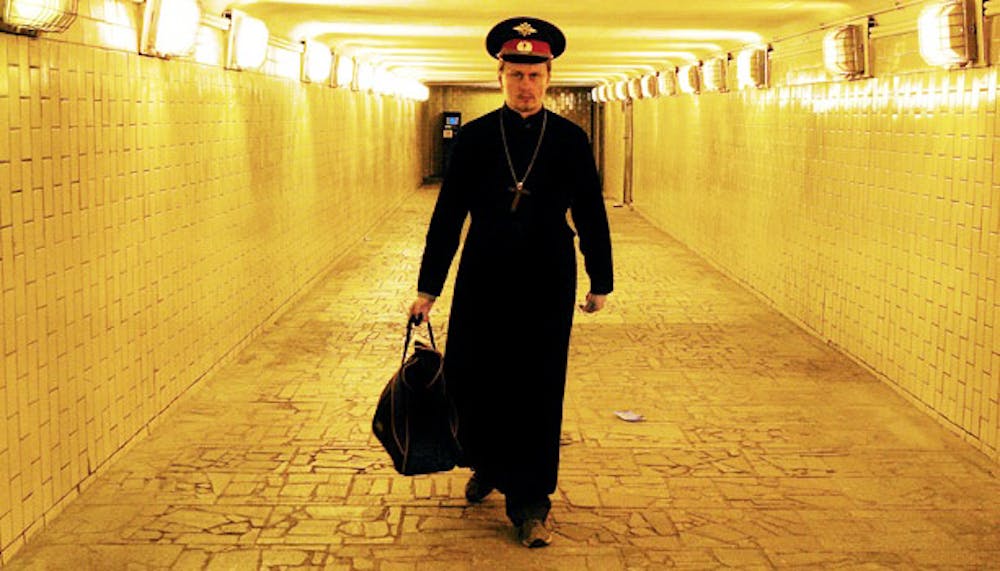The phrase “political art” is something of a misnomer. Okay, I’ll be honest — it’s a horrible title. When I hear “political art” I think of Shepard Fairey’s “Hope” posters for the Obama campaign, or that really stunning, bedazzled portrait of Michele Bachmann I picked up last week. But true political art extends way past politics: today, it has come to refer to a variety of modes of art that aggressively confront societal problems. Take “Ordnance,” for example, where Philly’s own Tim Belknap ironically tackles American suburban complacency through the reconfiguration of household objects.
At its best, “political” art is brash, loud and downright rude — much like the work of Voina, a Russian performance art collective. Voina has addressed many of the modern injustices of its native Russia, from racism and homophobia to ignorance in general. In the group’s provocative 2009 happening A Cop in a Priest’s Robe, a man dressed as a priest wearing a cop’s hat brazenly shoplifts without punishment, demonstrating how quickly society turns a blind eye to traditional figures of authority.
But this kind of in–your–face political art is hardly new. Anselm Kiefer’s post–World War II exhibition “Occupations” deserves a mention here, as Kiefer’s show was something of a scandal at the time (Think of when Teresa Giudice screamed “Prostitution whore!” on Real Housewives).
Kiefer, a young art student, photographed himself standing on and around a number of European monuments making the Nazi salute. This didn’t go over quite so well in Germany, but Kiefer’s statement on one society’s attempts to repress a shameful national history still resounds strongly.
Nowadays you can’t get very far without hearing talk of Ai Weiwei, a Chinese artist whose highly controversial art gives the finger (sometimes literally) to political centers of the world, and who eventually found himself arrested and detained by the Chinese government he so severely criticized.
In his recent monumental work, Sunflower Seeds, on view at the Tate Modern, Weiwei fills an entire gallery with millions of handcrafted porcelain sunflower seeds. Although viewers can no longer tread over the piece, it still stands as a poignant reminder of the individuals behind the economic and political behemoth of 21st–century China.
These artists undoubtedly confront viewers with aggressively executed statements, reaching a wide audience with the boldness and clarity of their political commentaries. Their pieces hint at a growing circuit of confrontational artwork, a movement that challenges society through a spectrum of hostility ranging from the extremely subtle to the in–your–face tactics of Belknap, members of Voina, Kiefer and Weiwei. They continue to demonstrate that art is still as badass and relevant as ever, and rightly so. With art as accessible as it is now, they are more than capable of challenging modern issues in front of an attentive world audience.







